
Rio de Janeiro: The Marvelous City
Discover the vibrant culture, stunning landscapes, and world-famous beaches of Rio de Janeiro, Brazil's Marvelous City.
Rio de Janeiro, often simply referred to as Rio, is a vibrant city located on the southeastern coast of Brazil. Known for its stunning natural beauty, Rio is surrounded by lush mountains, sandy beaches, and an iconic skyline. The famous Christ the Redeemer statue, perched atop the Corcovado Mountain, provides a breathtaking view of the city and is a must-visit landmark. The city's beaches, including Copacabana and Ipanema, are world-renowned and offer a perfect blend of relaxation and activity. Whether you're interested in sunbathing, surfing, or simply enjoying a coconut water while people-watching, these beaches offer something for everyone. The annual Carnival festival is another highlight, drawing visitors from around the globe with its vibrant parades, samba music, and elaborate costumes. Rio is also rich in culture and history. The neighborhood of Santa Teresa is known for its charming, narrow streets and colonial architecture, while the downtown area boasts impressive landmarks like the Municipal Theater and the National Museum. For nature lovers, a visit to the Tijuca National Park, one of the world's largest urban forests, is a must. Here, you can hike, spot wildlife, and even take a refreshing dip in a waterfall. Foodies will delight in Rio's diverse culinary scene, which offers everything from traditional Brazilian dishes like feijoada to international cuisine. Don't forget to try a caipirinha, Brazil's national cocktail, while soaking in the local atmosphere at a beachside kiosk or a trendy bar in the Lapa district.
Local tips in Rio de Janeiro
- Visit early in the morning or late in the afternoon to avoid crowds at Christ the Redeemer.
- Always stay aware of your surroundings and avoid displaying valuables in public areas.
- Use official taxis or ride-sharing apps for safe and reliable transportation.
- Learn a few basic Portuguese phrases; locals appreciate the effort and it can enhance your experience.
- Plan your trip during Carnival for a unique and unforgettable experience, but book accommodations well in advance.
- Take the time to explore the lesser-known neighborhoods like Lapa and Santa Teresa for a more authentic local experience.
Neighbourhoods in Rio de Janeiro
Rio de Janeiro: The Marvelous City
Rio de Janeiro, often simply referred to as Rio, is a vibrant city located on the southeastern coast of Brazil. Known for its stunning natural beauty, Rio is surrounded by lush mountains, sandy beaches, and an iconic skyline. The famous Christ the Redeemer statue, perched atop the Corcovado Mountain, provides a breathtaking view of the city and is a must-visit landmark. The city's beaches, including Copacabana and Ipanema, are world-renowned and offer a perfect blend of relaxation and activity. Whether you're interested in sunbathing, surfing, or simply enjoying a coconut water while people-watching, these beaches offer something for everyone. The annual Carnival festival is another highlight, drawing visitors from around the globe with its vibrant parades, samba music, and elaborate costumes. Rio is also rich in culture and history. The neighborhood of Santa Teresa is known for its charming, narrow streets and colonial architecture, while the downtown area boasts impressive landmarks like the Municipal Theater and the National Museum. For nature lovers, a visit to the Tijuca National Park, one of the world's largest urban forests, is a must. Here, you can hike, spot wildlife, and even take a refreshing dip in a waterfall. Foodies will delight in Rio's diverse culinary scene, which offers everything from traditional Brazilian dishes like feijoada to international cuisine. Don't forget to try a caipirinha, Brazil's national cocktail, while soaking in the local atmosphere at a beachside kiosk or a trendy bar in the Lapa district.
When is the best time to go to Rio de Janeiro?
Iconic landmarks you can’t miss
Christ the Redeemer
Discover the breathtaking views and cultural significance of Christ the Redeemer, Rio de Janeiro's iconic landmark, nestled in Tijuca National Park.
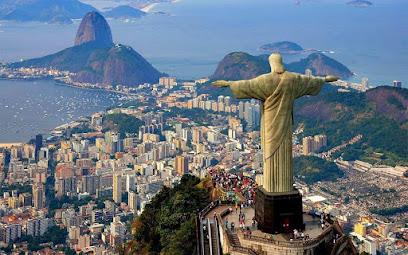
Escadaria Selarón
Explore the colorful mosaic of Escadaria Selarón in Rio de Janeiro, a stunning tribute to art and culture in the vibrant neighborhood of Santa Teresa.
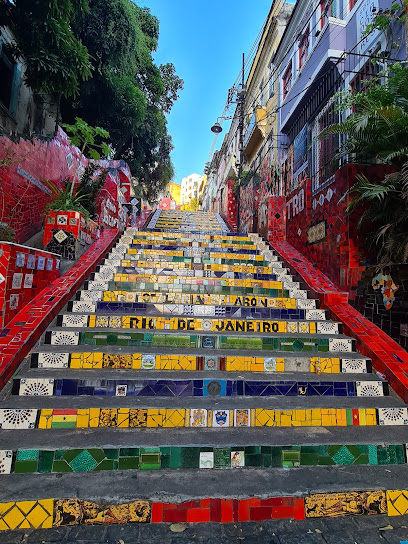
Sugar Loaf cable car
Experience breathtaking views of Rio de Janeiro from the iconic Sugar Loaf cable car, a must-visit tourist attraction offering stunning panoramas.
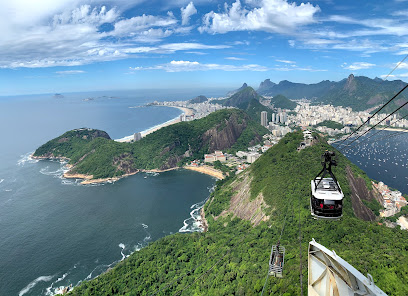
Monumento Natural dos Morros do Pão de Açúcar e da Urca
Experience breathtaking views and thrilling adventures at Sugarloaf Mountain, a must-see natural park in Rio de Janeiro.
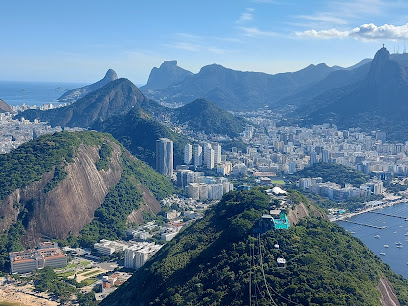
Parque Lage
Discover the picturesque beauty and cultural richness of Parque Lage, a lush urban park nestled in Rio de Janeiro’s vibrant Jardim Botânico neighborhood.
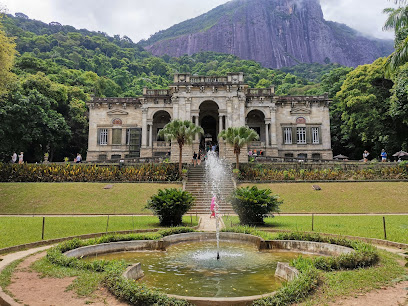
Copacabana Fort
Explore the historic Copacabana Fort, where military heritage meets stunning ocean views in Rio de Janeiro's vibrant Copacabana district.

Centro Cultural Banco do Brasil (CCBB)
Explore the Centro Cultural Banco do Brasil, a cultural gem in Rio de Janeiro offering art exhibitions, performances, and a stunning historical backdrop.
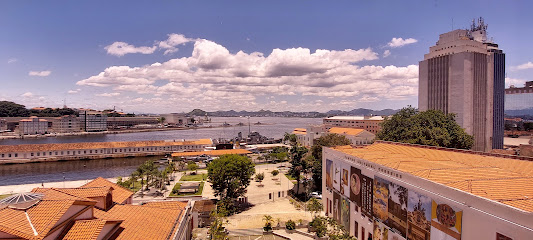
Quinta da Boa Vista
Discover the lush landscapes and rich history at Quinta da Boa Vista, Rio's tranquil city park and former imperial grounds.
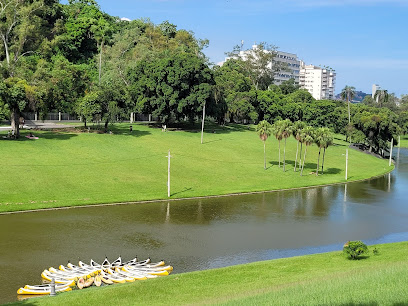
Pedra do Arpoador
Discover breathtaking views and vibrant sunsets at Pedra do Arpoador, a scenic gem in Rio de Janeiro combining natural beauty with vibrant beach culture.
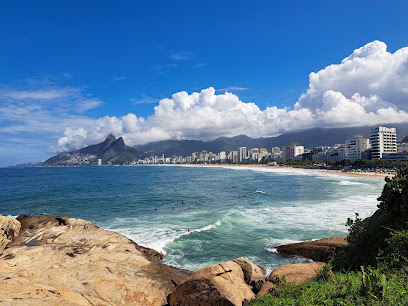
Catedral Metropolitana de São Sebastião do Rio de Janeiro
Experience the stunning architecture and spiritual ambiance of Catedral Metropolitana de São Sebastião, a must-visit landmark in the heart of Rio de Janeiro.

Arcos da Lapa | Aqueduto da Carioca
Discover the Arcos da Lapa, Rio de Janeiro's iconic aqueduct, a historical marvel blending stunning architecture and vibrant culture in the heart of the city.
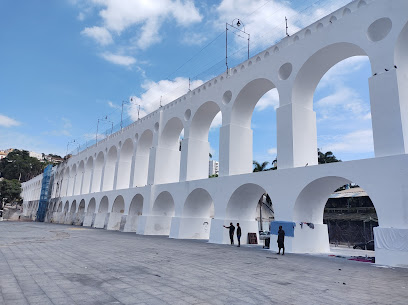
Tijuca National Park
Experience the beauty of Tijuca National Park, a lush urban rainforest in Rio de Janeiro, perfect for hiking, wildlife spotting, and breathtaking views.
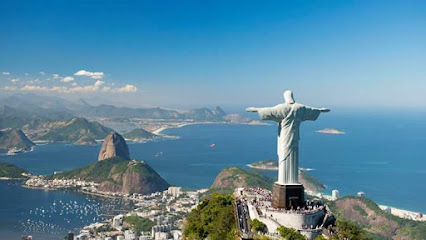
Mirante do Leblon
Discover the stunning panoramic views of Ipanema and Dois Irmãos at Mirante do Leblon, a must-visit scenic spot in Rio de Janeiro.
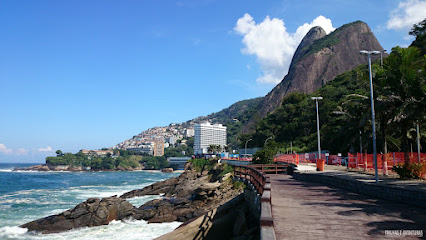
Estátua de Carlos Drummond de Andrade
Explore the Carlos Drummond de Andrade statue at Copacabana beach, where Brazilian poetry meets stunning ocean views in Rio de Janeiro.
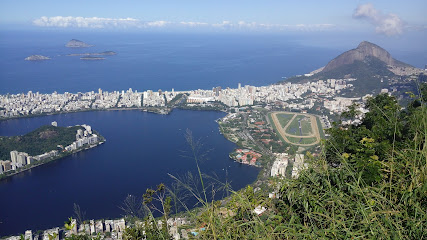
Pedra do Sal
Explore the vibrant history and cultural richness of Pedra do Sal, Rio de Janeiro's iconic landmark known for its samba music and historical significance.
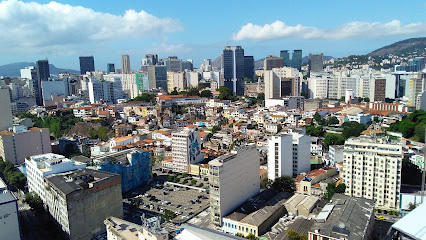
Unmissable attractions to see
Christ the Redeemer
Uncover the breathtaking views and cultural significance of Christ the Redeemer, Rio de Janeiro's iconic symbol of faith and beauty.
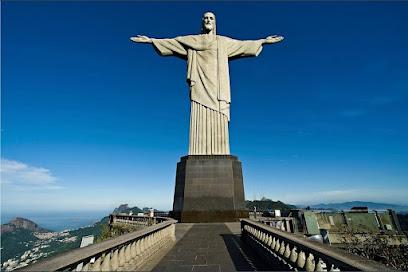
Maracanã
Explore Maracanã Stadium, the legendary heart of Brazilian football, and immerse yourself in the vibrant culture and history of Rio de Janeiro.
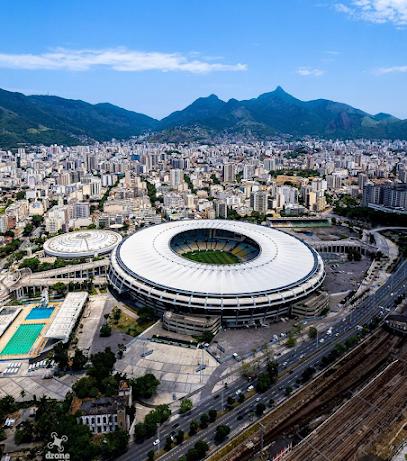
Museu do Amanhã
Explore the future of science and innovation at Museu do Amanhã, Rio de Janeiro's premier science museum with stunning architecture and interactive exhibits.
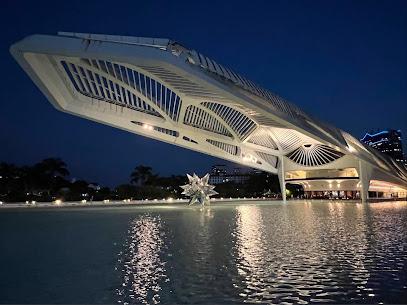
Escadaria Selarón
Discover the colorful mosaic of Escadaria Selarón, a vibrant staircase in Rio de Janeiro that celebrates art, culture, and community through stunning tiles.
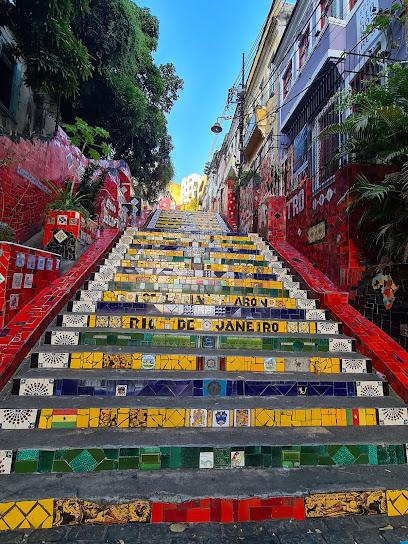
AquaRio
Discover the mesmerizing underwater world at AquaRio, Brazil's largest aquarium, located in the heart of Rio de Janeiro's vibrant Gamboa neighborhood.
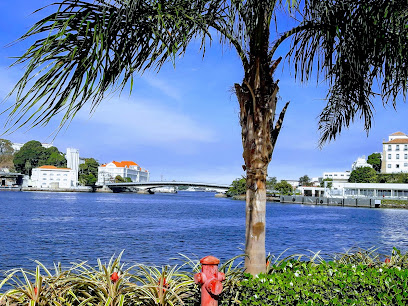
Parque Lage
Explore the lush landscapes and rich culture of Parque Lage, a tranquil park in the heart of Rio de Janeiro, perfect for nature lovers and art enthusiasts alike.
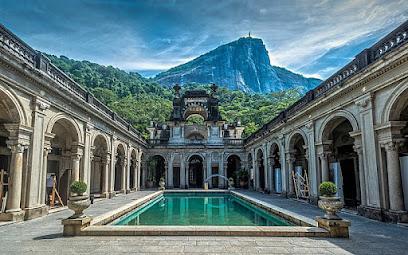
Centro Cultural Banco do Brasil (CCBB)
Explore the vibrant cultural scene at Centro Cultural Banco do Brasil, a must-visit destination in the heart of Rio de Janeiro, showcasing art, history, and performance.
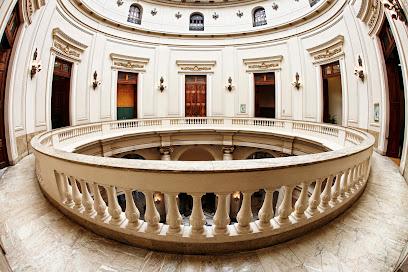
Copacabana Fort
Immerse yourself in history and enjoy breathtaking views at Copacabana Fort, a cultural gem in the heart of Rio de Janeiro.
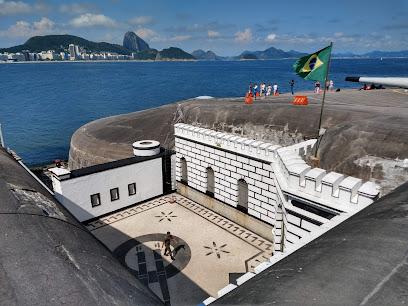
Botanical Garden of Rio de Janeiro
Explore the lush landscapes of the Botanical Garden of Rio de Janeiro, a serene retreat filled with exotic plants and rich biodiversity.
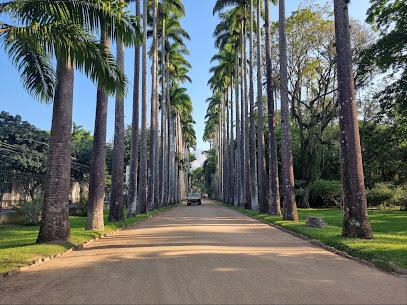
Quinta da Boa Vista
Explore the lush greenery and historical significance of Quinta da Boa Vista, a premier city park in Rio de Janeiro, perfect for relaxation and adventure.
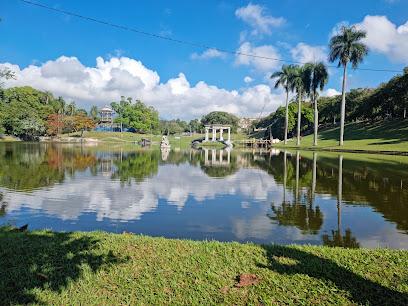
BioPark of Rio
Experience the enchanting BioPark of Rio, where diverse wildlife and lush landscapes create an unforgettable adventure in the heart of Rio de Janeiro.
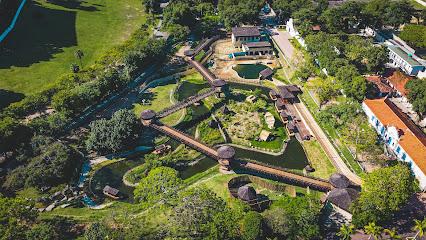
Parque Madureira
Explore the natural beauty and cultural richness of Parque Madureira, a vibrant oasis in the heart of Rio de Janeiro perfect for relaxation and recreation.
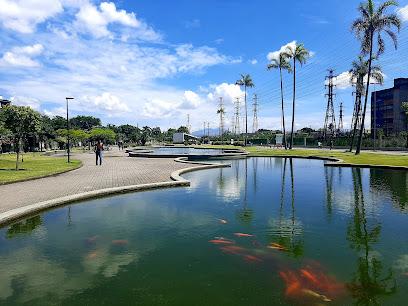
Imperial Museum
Explore a regal journey through Brazil's history at the Imperial Museum, a must-see tourist attraction in the heart of Petrópolis.

Nilton Santos Olympic Stadium
Explore the Nilton Santos Olympic Stadium, a modern sports venue that showcases Brazil's rich sporting heritage and vibrant culture in the heart of Rio de Janeiro.
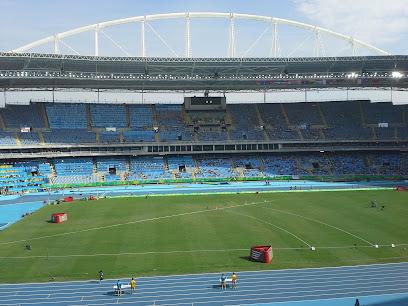
Pedra do Arpoador
Discover the stunning vistas and vibrant sunsets at Pedra do Arpoador, Ipanema's iconic scenic spot in Rio de Janeiro.
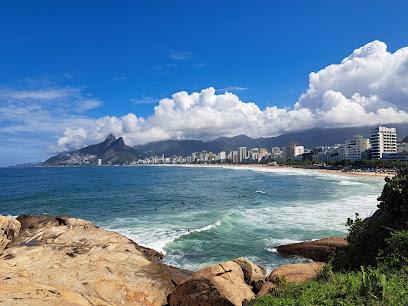
Essential places to dine
Restaurante Marius Degustare
Experience exquisite seafood and delightful Brazilian-Mediterranean fusion at Restaurante Marius Degustare in Copacabana.
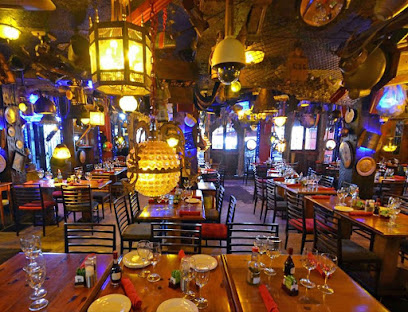
Terra Brasilis
Experience the best of Brazilian cuisine at Terra Brasilis, where live music meets stunning views over Sugarloaf Mountain.
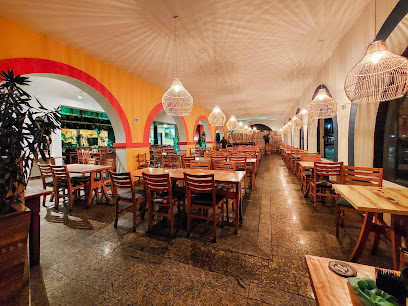
Churrascaria Palace
Experience the best Brazilian barbecue at Churrascaria Palace in Copacabana - where flavor meets tradition in every bite.
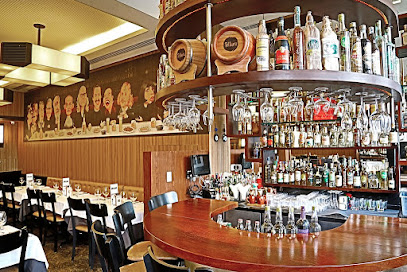
Aprazível
Experience exquisite Brazilian cuisine with breathtaking views at Aprazível in Santa Teresa.
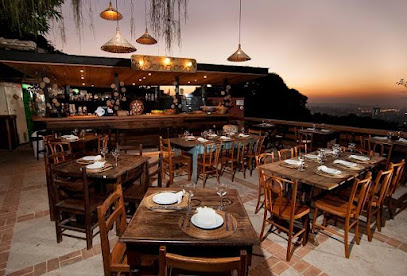
Alloro al Miramar
Experience authentic Italian cuisine with breathtaking views at Alloro al Miramar in Copacabana.
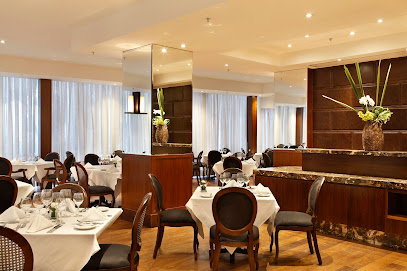
CT Boucherie
Experience exquisite French cuisine and barbecue delights at CT Boucherie in Leblon - a culinary journey you won't forget.
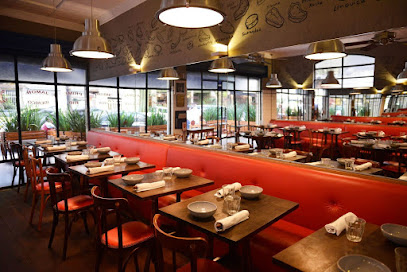
Joaquina Bar & Restaurant
Experience authentic Brazilian cuisine and vibrant nightlife at Joaquina Bar & Restaurant in Botafogo, Rio de Janeiro.
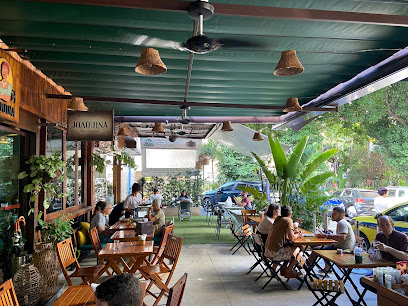
La Trattoria
Experience authentic Italian cuisine at La Trattoria in Copacabana - where every meal is a celebration of flavor and culture.
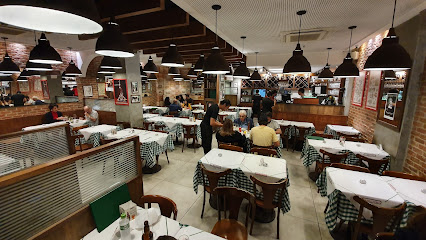
Joaquina
Experience authentic Brazilian flavors at Joaquina, Copacabana's culinary jewel offering exquisite dishes in a vibrant setting.

Oro
Experience innovative Brazilian cuisine at Oro in Leblon, where culinary artistry meets exceptional dining.
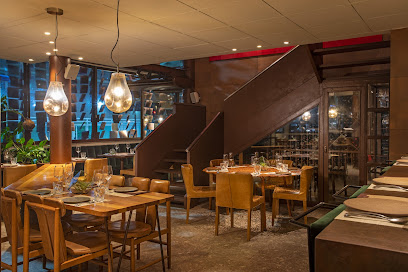
Zazá Bistrô Tropical
Discover the vibrant flavors of Brazil at Zazá Bistrô Tropical in Ipanema - a must-visit bistro for food lovers seeking an unforgettable dining experience.
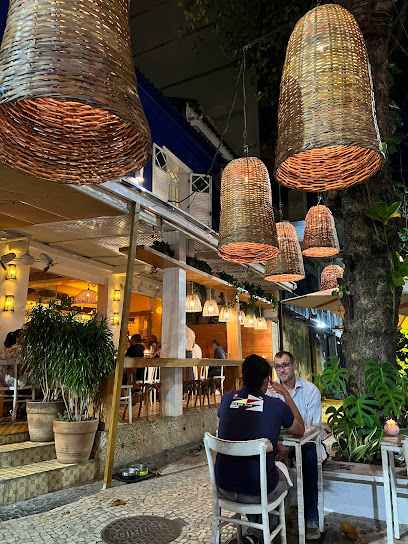
Galeto 183
Experience authentic Brazilian flavors at Galeto 183 in Rio de Janeiro's vibrant Centro district - where tradition meets taste.

Restaurante Casa Urich
Discover Restaurante Casa Urich: A Culinary Journey Through Authentic German Flavors in the Heart of Rio de Janeiro.
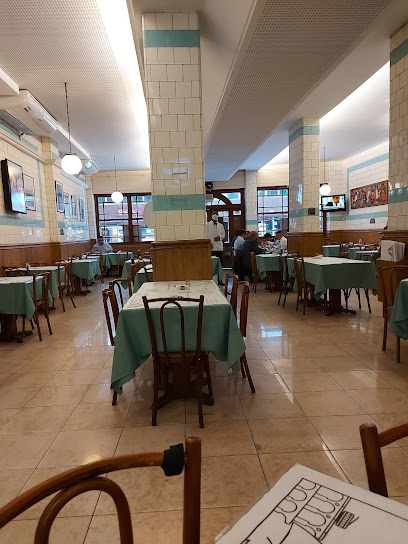
Adega Pérola
Savor the best of Brazilian cuisine and cocktails at Adega Pérola in Copacabana – a vibrant dining destination for every traveler.
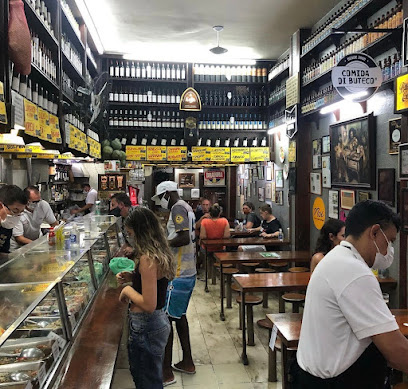
Restaurante Príncipe de Mônaco - (Copacabana)
Experience the best seafood in Copacabana at Restaurante Príncipe de Mônaco – where flavor meets vibrant coastal culture.
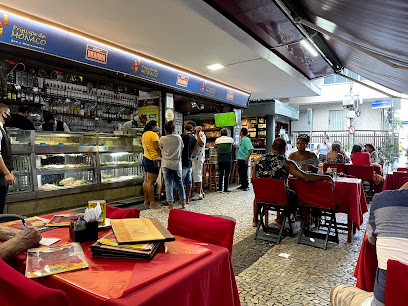
Markets, malls and hidden boutiques
BarraShopping
Experience the ultimate shopping destination in Rio de Janeiro at BarraShopping, featuring top brands, eclectic dining, and endless entertainment.

Shopping RioSul
Discover Shopping RioSul, a vibrant shopping mall in Botafogo, Rio de Janeiro, filled with a variety of shops, dining, and entertainment for every traveler.
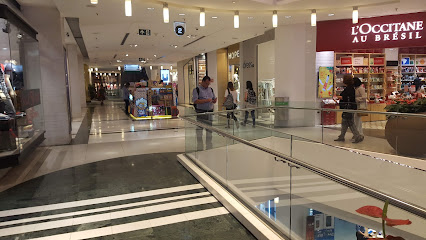
Botafogo Praia Shopping
Discover Botafogo Praia Shopping: Where Shopping Meets Stunning Views of Sugarloaf Mountain in Rio de Janeiro.

Shopping Leblon
Explore the elegance of Shopping Leblon, Rio's premier destination for luxury shopping, exquisite dining, and vibrant entertainment.

VillageMall
Experience luxury shopping and gourmet dining at VillageMall, the premier shopping destination in Rio de Janeiro's Barra da Tijuca.
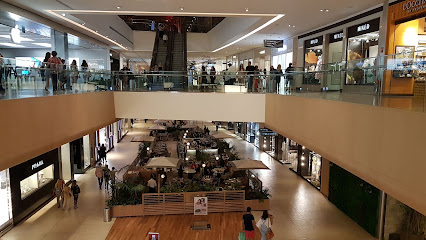
Bossa Nova Mall
Experience the vibrant shopping, dining, and entertainment at Bossa Nova Mall, a premier destination in the heart of Rio de Janeiro.
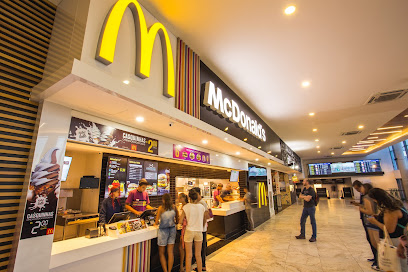
Mercado Popular Uruguaiana
Explore the colorful Mercado Popular Uruguaiana in Rio de Janeiro, a vibrant marketplace bursting with local culture, unique gifts, and endless shopping options.

Shopping Cidade Copacabana
Discover Shopping Cidade Copacabana, a vibrant shopping mall in Rio de Janeiro, offering diverse stores, delicious dining, and exciting entertainment options.
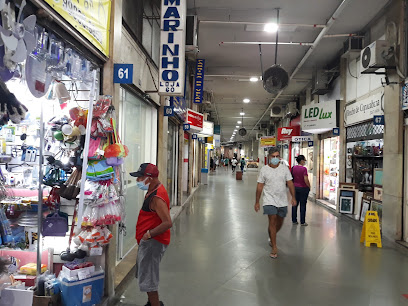
Shopping Cassino Atlântico
Discover Shopping Cassino Atlântico, a vibrant shopping mall in Copacabana, offering luxury brands, local boutiques, and diverse dining options for every visitor.
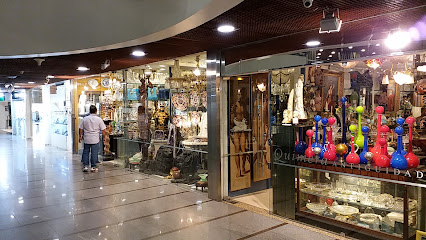
Vertical Shopping
Discover the ultimate commercial hub in Rio de Janeiro - a blend of business, events, and vibrant culture awaits at Vertical Shopping.

Galeria River
Experience the bustling atmosphere of Galeria River, a premier shopping destination in the heart of Ipanema, Rio de Janeiro.

Shopping 680
Experience the best of shopping and dining at Shopping 680 in Copacabana, a vibrant mall with something for everyone.
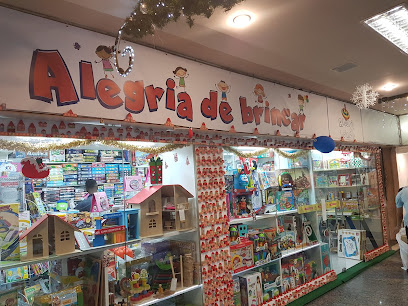
Feira Hippie de Ipanema
Discover the vibrant Feira Hippie de Ipanema, where local artisans showcase unique handicrafts, delicious street food, and the rich culture of Rio de Janeiro.
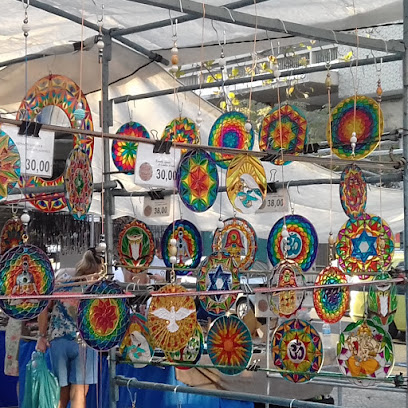
Bazar do Saara
Explore Bazar do Saara in Rio de Janeiro for an unforgettable shopping experience filled with unique gifts and local treasures.
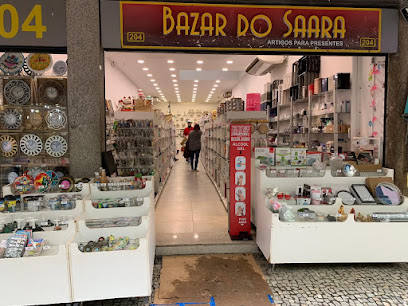
Melhor das Casas
Explore Melhor das Casas, a vibrant craft store in Rio de Janeiro, where creativity meets culture and every item tells a story.

Essential bars & hidden hideouts
Bar e Restaurante Urca
Experience the vibrant flavors of Brazil at Bar e Restaurante Urca, where stunning views and delicious cuisine await every visitor in Rio de Janeiro.
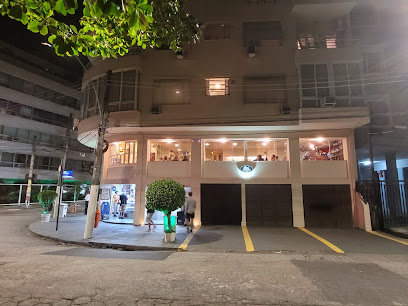
Pavão Azul Bar
Discover the vibrant nightlife and authentic Brazilian flavors at Pavão Azul Bar in Copacabana, a local favorite for drinks and delicious petiscos.
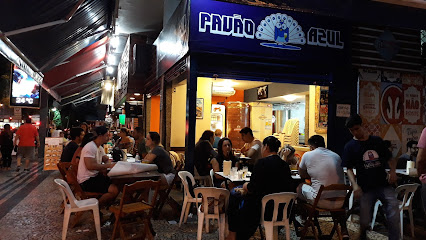
Boteco Belmonte
Experience the vibrant flavors and lively atmosphere of Boteco Belmonte, a must-visit bar and Brazilian restaurant in the heart of Copacabana.
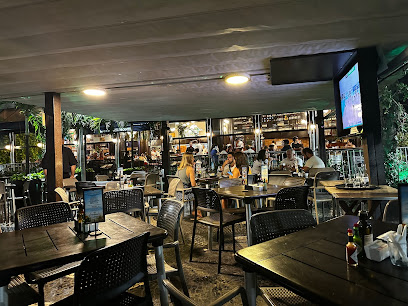
Bar Bukowski
Experience the pulsating nightlife of Rio de Janeiro at Bar Bukowski, a rock music haven in Botafogo, perfect for unforgettable nights out.
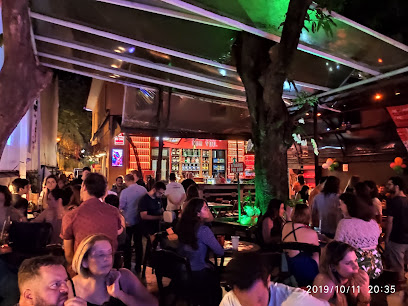
Jobi
Discover Jobi, a vibrant cocktail bar in Leblon, Rio de Janeiro, known for its lively ambiance, delightful drinks, and delicious snacks.
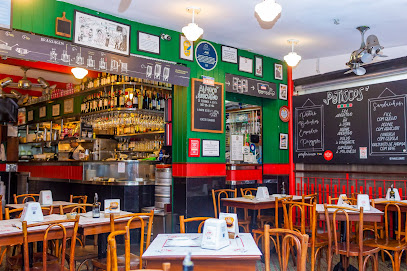
Bar Carioca da Gema
Discover Bar Carioca da Gema, where vibrant cocktails meet live Brazilian music for an unforgettable night in Rio de Janeiro.
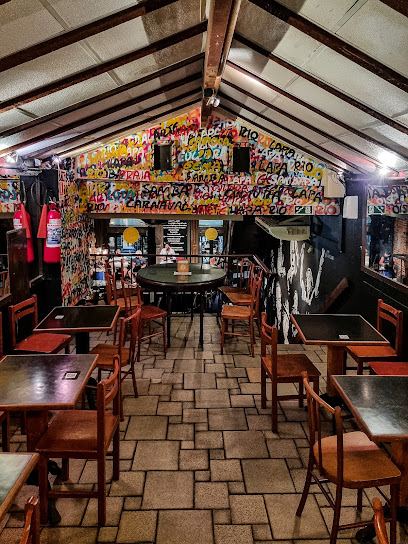
Explorer Bar
Explore the vibrant cocktail culture of Santa Teresa at Explorer Bar, where creative drinks and lively ambiance come together for an unforgettable night.
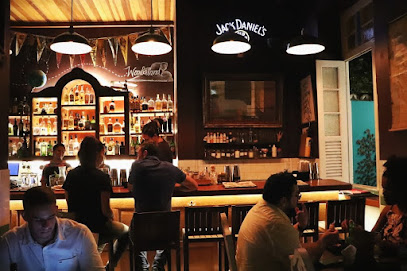
Canastra Bar
Savor the exquisite taste of artisanal pizzas at Canastra Bar, the vibrant gastropub in Ipanema, Rio de Janeiro.
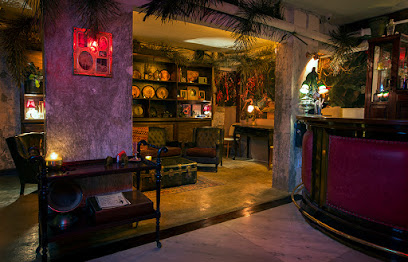
Jungle Garden Pub
Experience the vibrant nightlife of Rio de Janeiro at Jungle Garden Pub, where delicious gastropub cuisine meets fun-filled entertainment.
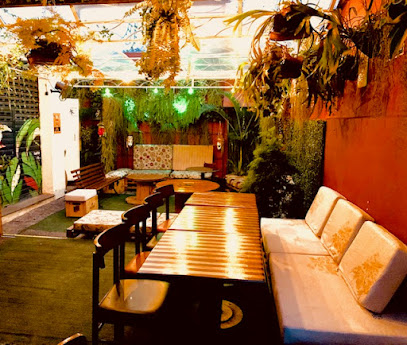
Calabouço Rock Bar
Discover the lively Calabouço Rock Bar in Vila Isabel, Rio de Janeiro - a hotspot for live music, vibrant nightlife, and a taste of local culture.

Bip Bip
Discover Bip Bip in Copacabana: Where Live Music and Affordable Drinks Create Unforgettable Nights in Rio de Janeiro.
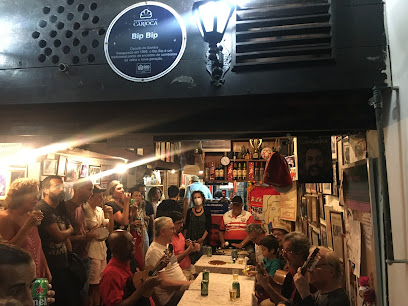
Boteco Carioquinha
Experience the essence of Rio de Janeiro's nightlife at Boteco Carioquinha, where vibrant culture and delicious drinks meet in perfect harmony.
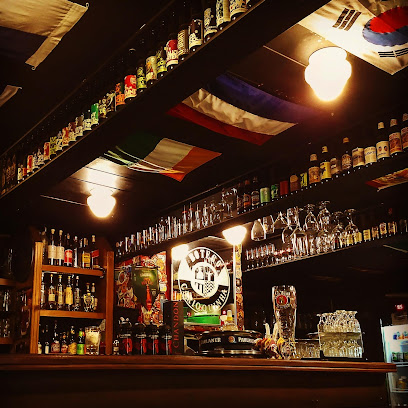
Meza Bar
Experience the vibrant nightlife of Rio de Janeiro at Meza Bar, where exceptional drinks and a lively atmosphere await you.
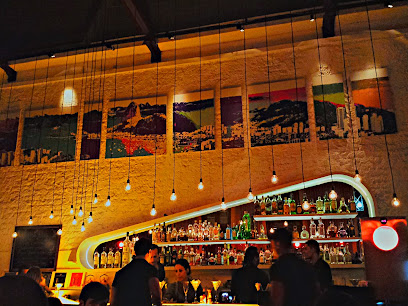
Lapa Irish Pub
Discover the vibrant atmosphere and authentic Irish experience at Lapa Irish Pub in Rio de Janeiro's lively Lapa district.
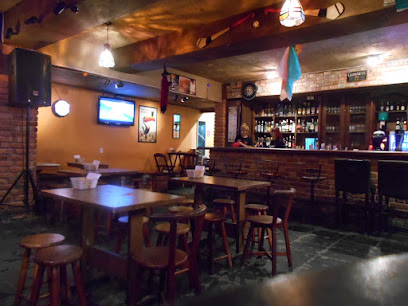
Bohemian Lapa Cavern Pub
Bohemian Lapa Cavern Pub: Embrace the lively spirit of Rio's nightlife with live music, delicious drinks, and a unique, vibrant ambiance.
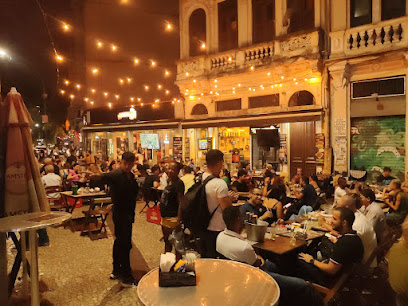
Local Phrases
-
- HelloOi
[oy] - GoodbyeTchau
[chow] - YesSim
[seem] - NoNão
[now] - Please/You're welcomePor favor/De nada
[pohr fah-vohr/deh nah-dah] - Thank youObrigado
[oh-bree-gah-doh] - Excuse me/SorryCom licença/Desculpe
[kohm lee-sen-sah/deh-scoo-peh] - How are you?Como vai?
[koh-moh vah-ee] - Fine. And you?Bem. E você?
[behn/eh voh-seh] - Do you speak English?Você fala inglês?
[voh-seh fah-lah een-glehsh] - I don't understandEu não entendo
[eh-oo now ehn-tehn-doh]
- HelloOi
-
- I'd like to see the menu, pleaseEu gostaria de ver o cardápio, por favor
[eh-oo goh-stah-ree-ah deh vehr oo cahr-dah-pee-oh/pohr fah-vohr] - I don't eat meatEu não como carne
[eh-oo now koh-moh kahr-neh] - Cheers!Saúde!
[sah-oo-deh] - I would like to pay, pleaseEu gostaria de pagar, por favor
[eh-oo goh-stah-ree-ah deh pah-gahr/pohr fah-vohr]
- I'd like to see the menu, pleaseEu gostaria de ver o cardápio, por favor
-
- Help!Socorro!
[soh-koh-roh] - Go away!Vai embora!
[vah-ee ehn-boh-rah] - Call the Police!Chame a Polícia!
[shah-mee ah poh-lee-see-ah] - Call a doctor!Chame um médico!
[shah-mee oom meh-dee-koo] - I'm lostEstou perdido
[eh-stoh pehr-dee-doo] - I'm illEstou doente
[eh-stoh doh-ehn-tee]
- Help!Socorro!
-
- I'd like to buy...Eu gostaria de comprar...
[eh-oo goh-stah-ree-ah deh kohm-prahr] - I'm just lookingEstou só olhando
[eh-stoh soh oh-yahn-doo] - How much is it?Quanto custa?
[kwan-toh koos-tah] - That's too expensiveIsso é muito caro
[ee-soh eh moo-ee-toh kah-roh] - Can you lower the price?Você pode baixar o preço?
[voh-seh poh-deh bahy-shahr oo preh-soh]
- I'd like to buy...Eu gostaria de comprar...
-
- What time is it?Que horas são?
[keh oh-rahz sah-oh] - It's one o'clockÉ uma hora
[eh oo-mah oh-rah] - Half past (10)Meia hora (10)
[may-ah oh-rah (deh-ees)] - MorningManhã
[mahn-yah] - AfternoonTarde
[tahr-dee] - EveningNoite
[noy-chee] - YesterdayOntem
[ohn-tehn] - TodayHoje
[oh-zhee] - TomorrowAmanhã
[ah-mahn-yah] - 1Um
[oom] - 2Dois
[doh-ees] - 3Três
[trehs] - 4Quatro
[kwah-troh] - 5Cinco
[seen-koh] - 6Seis
[says] - 7Sete
[seh-teh] - 8Oito
[oy-toh] - 9Nove
[noh-veh] - 10Dez
[dehz]
- What time is it?Que horas são?
-
- Where's a/the...?Onde é o/a...?
[ohn-deh eh ooh/ah] - What's the address?Qual é o endereço?
[kwal eh ooh ehn-deh-reh-soh] - Can you show me (on the map)?Você pode me mostrar (no mapa)?
[voh-seh poh-deh meh moh-strahr (noh mah-pah)] - When's the next (bus)?Quando é o próximo (ônibus)?
[kwan-doh eh ooh proh-kshee-moh (ohn-ee-boos)] - A ticket (to ....)Um bilhete (para ....)
[oom beel-yeh-chee (pah-rah)]
- Where's a/the...?Onde é o/a...?
History of Rio de Janeiro
-
Rio de Janeiro was officially founded on March 1, 1565, by the Portuguese, led by Estácio de Sá. The city was established to defend against French privateers who had occupied Guanabara Bay. The initial settlement was named São Sebastião do Rio de Janeiro in honor of King Sebastian I of Portugal.
-
During the 16th and 17th centuries, Rio de Janeiro became an important hub for sugar production. The fertile lands surrounding the city were ideal for sugarcane plantations, which relied heavily on African slave labor. This period saw the growth of colonial architecture and the establishment of numerous churches and monasteries.
-
In the early 18th century, the discovery of gold in the neighboring state of Minas Gerais led to an economic boom in Rio de Janeiro. The city became a key port for exporting gold to Europe. This influx of wealth led to the construction of grand buildings and the development of the city's infrastructure.
-
In 1808, the Portuguese royal family, led by Prince Regent Dom João VI, fled to Rio de Janeiro to escape the Napoleonic Wars in Europe. The city became the de facto capital of the Portuguese Empire. This period saw significant urban development, including the establishment of the Royal Library and the Botanical Garden.
-
Brazil declared its independence from Portugal on September 7, 1822, with Rio de Janeiro becoming the capital of the newly established Empire of Brazil. Emperor Pedro I and later his son Pedro II ruled from the city, overseeing an era marked by economic growth, the abolition of slavery in 1888, and the influx of European immigrants.
-
The proclamation of the Republic in 1889 marked the beginning of significant changes for Rio de Janeiro. The city underwent extensive modernization efforts, including the demolition of colonial structures to make way for wide avenues and public parks. The early 20th century saw the rise of samba culture and the establishment of famous neighborhoods like Copacabana and Ipanema.
-
The mid-20th century was a time of cultural renaissance for Rio de Janeiro. The city became a global symbol of Brazilian culture, known for its vibrant Carnaval, bossa nova music, and iconic landmarks such as Christ the Redeemer. The construction of modernist architecture by figures like Oscar Niemeyer also left a lasting impact on the city's landscape.
-
In recent decades, Rio de Janeiro has continued to evolve as a major global city. Hosting events like the 2014 FIFA World Cup and the 2016 Summer Olympics showcased its rich culture and natural beauty to the world. Despite facing challenges such as social inequality and urban violence, Rio remains a city of dynamic energy and cultural diversity.
Rio de Janeiro Essentials
-
Rio de Janeiro is served by two main airports: Galeão International Airport (GIG) and Santos Dumont Airport (SDU). Galeão International Airport handles most international flights and is located about 20 kilometers from the city center. Santos Dumont Airport primarily handles domestic flights and is conveniently located near downtown Rio. You can reach the city from the airport by taxi, ride-sharing services, or airport shuttle buses.
-
Public transportation in Rio de Janeiro includes buses, the metro, and VLT trams. The metro is a reliable and safe option for getting around the city, especially for visiting popular tourist spots like Copacabana, Ipanema, and the downtown area. Buses cover extensive routes but can be crowded and less predictable. Taxis and ride-sharing services like Uber are widely available and recommended for late-night travel or reaching areas not well-served by public transport.
-
The official currency in Brazil is the Brazilian Real (BRL). Credit and debit cards are widely accepted in hotels, restaurants, and shops in Rio de Janeiro. However, it's advisable to carry some cash for small purchases, especially in local markets or smaller establishments. ATMs are plentiful and can be found in malls, banks, and other public places, but be cautious when withdrawing money, especially at night.
-
While Rio de Janeiro is a vibrant and beautiful city, it has areas with high crime rates, particularly concerning tourists. Some neighborhoods to be cautious of include Centro, Lapa, and some parts of Copacabana at night. Avoid displaying valuables, be mindful of your surroundings, and stick to well-lit and populated areas. Consider using a money belt or hidden pouch to carry important documents and money.
-
In case of emergency, dial 190 for the police, 192 for medical emergencies, and 193 for fire services. Major hospitals and clinics are available throughout the city. It's highly recommended to have travel insurance that covers medical emergencies. Pharmacies are widely available and can provide over-the-counter medications. For consular assistance, contact your country's embassy or consulate in Rio de Janeiro.
-
Fashion: Do dress comfortably and casually, especially due to the tropical climate. Avoid wearing expensive jewelry or watches in public. Religion: Do respect religious sites; many churches require modest clothing. Public Transport: Do keep an eye on your belongings and avoid using your phone or other valuables openly on public transport. Greetings: Do greet people with a handshake or a kiss on the cheek, which is common in Brazil. Eating & Drinking: Do try local dishes and be open to street food, but ensure it's from a reputable vendor. Don't drink tap water; opt for bottled water instead.
-
To experience Rio de Janeiro like a local, visit the open-air markets such as Feira de São Cristóvão for authentic Brazilian food and crafts. Enjoy the local samba and bossa nova music in places like Lapa. Take a walk or bike ride along the beachfront promenades of Copacabana and Ipanema. Don't miss out on trying açaí, a popular local fruit dish, and join in a game of beach volleyball or football with the locals.
Trending Landmark in Rio de Janeiro
-
Christ the Redeemer
-
Escadaria Selarón
-
Sugar Loaf cable car
-
Monumento Natural dos Morros do Pão de Açúcar e da Urca
-
Parque Lage
-
Copacabana Fort
-
Centro Cultural Banco do Brasil (CCBB)
-
Quinta da Boa Vista
-
Pedra do Arpoador
-
Catedral Metropolitana de São Sebastião do Rio de Janeiro
-
Arcos da Lapa | Aqueduto da Carioca
-
Tijuca National Park
-
Mirante do Leblon
-
Estátua de Carlos Drummond de Andrade
-
Pedra do Sal
Nearby Cities to Rio de Janeiro
-
Things To Do in São Paulo
-
Things To Do in Florianópolis
-
Things To Do in Brasília
-
Things To Do in Foz do Iguaçu
-
Things To Do in Puerto Iguazú
-
Things To Do in Hernandarias
-
Things To Do in Salvador
-
Things To Do in Encarnacion
-
Things To Do in Villarrica
-
Things To Do in Carmen del Parana
-
Things To Do in San Bernardino
-
Things To Do in Ypacarai
-
Things To Do in Aregua
-
Things To Do in Asuncion
-
Things To Do in Tacuarembó



















